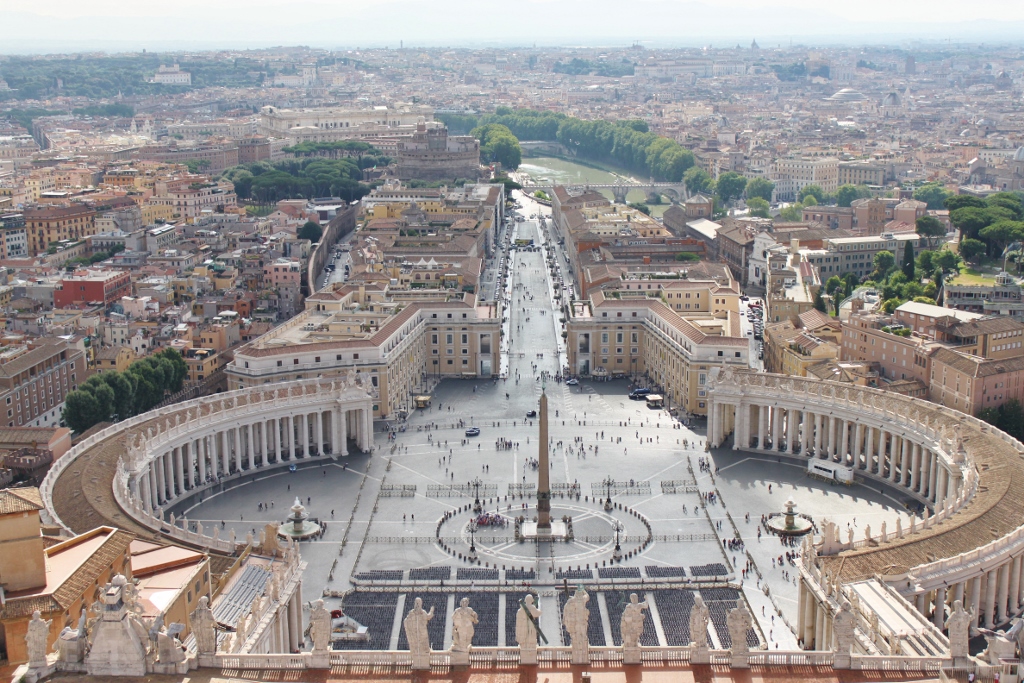In the long list of FAQ’s on traveling to Italy, one of the questions ranking high up on the list is: What is the best time of year to visit? Of course one could answer: “Anytime!”…but that’s a lazy (even if potentially accurate) answer.

What Is The Best time of year to visit Italy?
Personally, I love Italy and Rome in September and October. It’s cooler, the weather is beautiful, it’s less crowded, and travelers will find a more “real” Italy. What do I mean by “real”? With school and work closed in the hot summer months, most Italians flee to cooler and calmer places, leaving the playground open for the massive amount of world-travelers passing through. From September 1st, there is a visible change…Italians who had fled the cities for the coast and mountains for the summer break begin to spill back into the city, freshly rested and ready to return to work and school. Major Italian cities (especially Rome and the South) go from hibernation to business-as-usual in a matter of days. This means that visitors to major Italian cities in the summertime will find themselves in a sort of scalding hot Italian theme park, where the “rides” are museums and archaeological sites rather than rollercoasters and spinning teacups. Travelers with flexibility in holiday time, would do well to visit before or after the summer rush, in my opinion.
Largely, it’s a matter of personal opinion what makes a time of year “the best” or not. We can safely say that some times of year are more preferable to others, based on certain criteria. Let’s explore some different criteria then, shall we?
- Weather: The Fall and Spring arguably offer the best weather. Not too hot, not too cold, and filled with amazing colors of blooming trees or falling leaves… For beach-goers, you can still hit the beaches in September and even early October. For folks who hate the extreme hot or cold, you might avoid December-February and June-August. There’s of course variation in geography in The Boot, but in general, those are the coldest or hottest months. For beach-lovers, you might hit the south of Italy as early as April or May…or tough out the crowds in the summer since during these hot months many Italians themselves can be found sunbathing on the Peninsula’s many beaches and islands.
- Costs: Airlines and hotels hike up their prices, often doubling them, between May and August, and also in late December. Travelers who are seeking cheaper flights and fair accommodation rates should travel between September to early December, and late January to May. The cheapest travel months tend to be October, November, and February.
- Food and Drink: Every food and drink in Italy has its day (which means you’ll often find them in abundance and/or festivals dedicated to them when the time is right). Whether it’s artichokes, certain cheeses, wine harvests, wild boar, chestnuts, wild berries, or wild truffles….it’s safe to say you will never go hungry in any season!
- Sites: While most attractions are open all year long (ie: the Uffizi, the Capitoline, the Vatican, or the Colosseum), others are not. The Catacombs, underground tours of the Colosseum, Grottoes in the Amalfi, and some others are some examples of seasonally effected sites. Simply look up operating hours beforehand to avoid missing out.
- Crowds: Some cities in Italy are pilgrimage centers, which means that during major pilgrimage feast days or holidays these spots will be packed with visitors (for example Assisi in early October, Rome on Easter or Christmas, etc). The months of June, July and August tend to be the most crowded tourism months, as many people around the world can only vacation during this period.
So the good news is: There is no “right” or “wrong” time to visit Italy. The bad news is: this might be unhelpful for the indecisive traveler!

